The Racks They Are A-Changin’: New ‘Talon Cluster’ Brings Compute Resources and Cooling Infrastructure to the Data Center
High-performance computing is getting an update at Miami, and it's looking cooler every day.
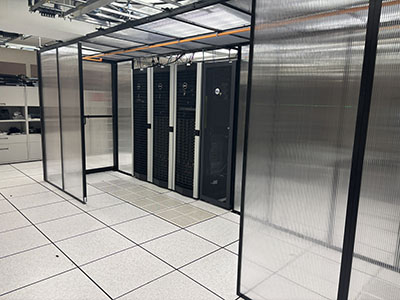
The Racks They Are A-Changin’: New ‘Talon Cluster’ Brings Compute Resources and Cooling Infrastructure to the Data Center
Since June of this year, anyone working in Hoyt Hall has no doubt heard the drilling and seen the big equipment being installed in the secure data center on the first floor of the building. What’s going on down there? What does it look like? Who’s involved?
Well, the not-so-breaking news is: New computing equipment is being installed, and work is being done to revolutionize the cooling infrastructure for our most critical physical technologies at Miami.
That’s right: High-performance computing is getting an update at Miami.
Let’s learn more!
The future of computing for faculty research and student learning
Our current high-performance computing cluster, Redhawk, is being used in research and classrooms when doing analysis on large data sets; this configuration of the HPC, along with some additional compute power available from the Ohio Supercomputer Center, have historically provided Miami folks with the technology means necessary to properly conduct their research.
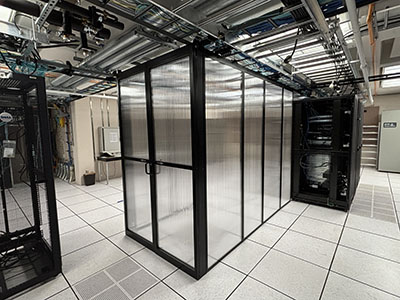
However, with the increase in visibility and viability of generative artificial intelligence and machine learning in the mainstream world, we knew we were going to need some more gusto in the technology department.
And so, Rick Page, associate vice president of the Office of Research and Innovation and professor of chemistry and biochemistry, put together a team of invested Miami folks to pursue funding for more and greater computing power. They received a grant from the National Science Foundation, which provided the funds for adding four new nodes to the aforementioned Hoyt data center, along with an entirely new cooling system to manage the extra heat (more about that later).
The new nodes, which we have affectionately and thematically christened the Talon Cluster, are going to open up a world of possibilities for faculty and students.
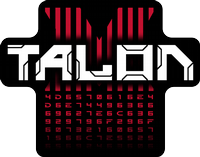
These GPUs will allow folks to process large amounts of data in shorter amounts of time. Not only that, but this technology will transform research and learning just by virtue of being newer and more powerful.
“It’s going to substantially increase the amount of machine learning and AI work that individuals at the university can do,” Page said.
The new machines are state-of-the-art computing nodes (technically, they contain graphical processing units, or GPUs) that will be used for high-powered computing by faculty for research and by students to learn about and have hands-on experiences with quantum simulations and applying large data sets.
A quantum simulator will also help students in the new quantum computing program develop the skills they are going to need when they get into the workforce.
“We’re going to push the boundaries of quantum application,” said Dr. Scott Campbell, senior director of technology and instructor for the College of Engineering and Computing, who was involved in the proposal and development of the project.
One thing Dr. Campbell noted was that our students are getting a quality education about quantum – an entire curriculum as opposed to the three or two discrete courses offered in other places. And having access to the software side of quantum is going to make a huge difference in the skillsets they develop.
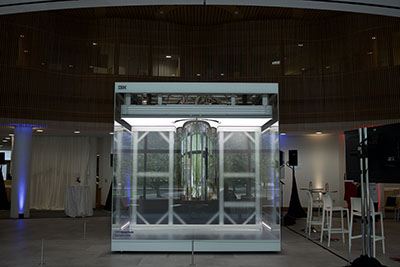
“They’re not going to be able to build the engine, but they’ll be able to change the oil,” Campbell quipped. “From a workforce development perspective, [...], I think it makes a lot of sense. There are going to be a lot of opportunities for jobs that take this quantum skillset and apply it to different problems.”
Quantum isn’t the only area that benefits from the new tech. Future students will also have access to a new major dealing with generative AI—and the new cluster will allow students to learn in hands-on scenarios.
“Current and future employees (so current students) are going to be much more competitive both if they are conversant in AI and also if they really know how to use it,” said Page. “This is also going to create a significant advantage for students who can actually use this technology to create their own custom large language models.”
Let’s talk specs!
The area set aside in the data center for the new servers is pretty extensive: The containment area is large enough for the new equipment, the existing Redhawk HPC cluster, new cooling units, and expansion space for future equipment and additional cooling units. We’ve had folks hard at work moving cords and cables around for the new space. In fact, several data center racks were removed and relocated in order to clear space for the containment area.
The Talon Cluster itself will initially consist of four GPU nodes, each of which contains four Nvidia H100 GPUs and 20 high density compute nodes. The type of GPU is important, because these will allow researchers to process huge amounts of data, including for subjects like biomechanical engineering or for analyzing data generated by millions of micro sensors.
Complex data sets require more energy to analyze, and there are many practical applications being worked on even now at Miami. Biotech is one particular area that has a vested interest here, and Page is close to that as a professor of chemistry as well. There are students building their own machine learning algorithms; faculty developing biosensors that detect ‘forever chemicals’ in our drinking water; and researchers using data to construct simulations in how molecules change and how folks become resistant to certain strands of vaccines.
All that heat’s got to go somewhere . . . Introducing the "Bird Cage"!
The innovation doesn’t stop at the compute hardware, though. All that hardware generates a lot of hot air—and the previous configuration of the data center needed some upgrades in order to accommodate the extra heat. Essentially, this new rack is so powerful that our data center technicians have had to design a new cooling system efficient enough to keep the machines from overheating.
“[The new cooling system is] designed to optimize and physically separate the cold supply air from the hot exhaust air,” said Mike Ritcher, manager of network infrastructure services, who is overseeing the construction and implementation of the new cooling system and server racks.
What’s more, this new mechanism will tie into Miami’s geothermal plant. High-capacity water lines are being installed from the Hoyt Hall geothermal pumps to the data center and under the raised floor, and these lines will circulate the chilled water.
“New in-row cooling units will utilize chilled water from the campus geothermal plant,” Ritcher said. “It will be the first of this type in the data center, and this contributes to Miami's efforts toward meeting sustainability goals.”
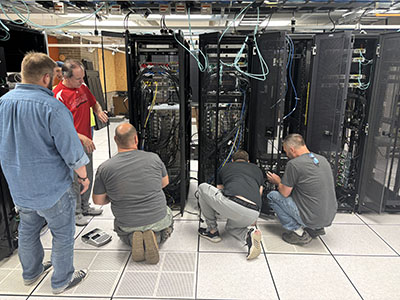
The geothermal pumps will be connected to a data center backup generator for continuous service during power disruptions. This cooling system is an expensive addition to the data center, but it will allow us to add more servers and compute power down the line.
Dr. Campbell also made sure to note that the foresight shown by Ritcher and the rest of the team in designing the cooling racks in a future-focused way added huge value to the project. Troy Travis, assistant vice president for enterprise operations, and Chris Edester, manager of enterprise database and systems operations, were both heavily involved in the planning and execution of this endeavor.
“The containment area is almost double the capacity of the initial requirement,” Edester said. “There’s a lot of room for growth.”
In addition to leaving room for more machines down the line, we have also rotated the Redhawk HPC cluster so that it faces the new containment zone, so those machines can take advantage of the advanced cooling technology as well.
We’re affectionately calling the new cold air containment space the “Bird Cage,” since it houses the Talon and Redhawk clusters. (No doubt you see a theme here.)
Faculty, staff, and students familiar with the project are all excited for the new Talon Cluster and the potential it represents. We can’t wait til it’s done!